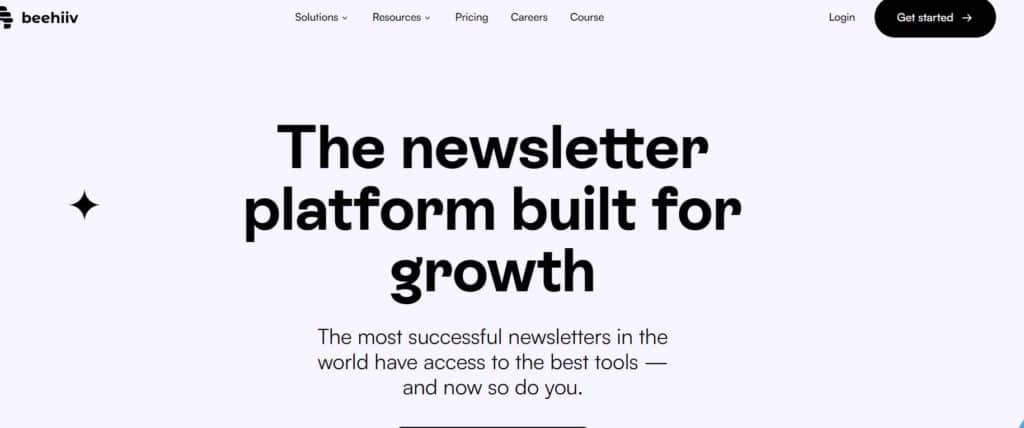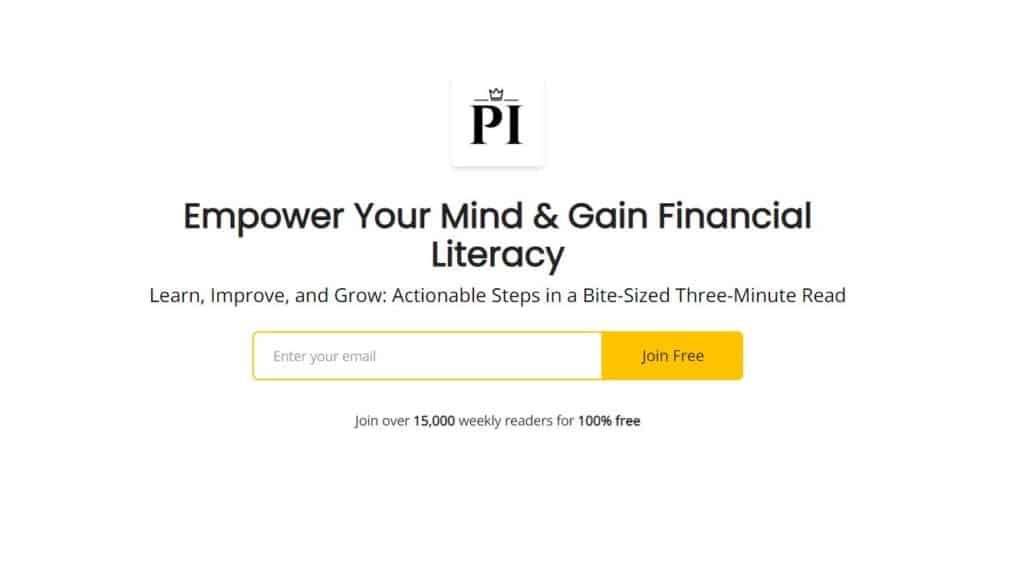Are you tired of manually sending out newsletters to your subscribers every week? Do you wish there was a way to automate the process and save time? Well, you’re in luck because newsletter automation is here to make your life easier.
With newsletter automation, you can set up a series of emails to be sent out automatically to your subscribers at specific intervals. This means you can create a set of emails once and have them sent out over time without any additional effort on your part. Not only does this save you time, but it also ensures that your subscribers receive consistent and timely content from you.
Automating your newsletters also allows you to personalize your emails based on your subscribers’ behavior. You can set up triggers that send specific emails based on actions your subscribers take, such as clicking a link or making a purchase. This targeted approach can lead to higher engagement and conversions. So, if you’re looking to streamline your newsletter process and improve your email marketing strategy, newsletter automation may be the solution you’ve been searching for.
Understanding Newsletter Automation
If you want to streamline your email marketing efforts, newsletter automation is a great place to start. Essentially, this involves setting up a series of automated emails triggered by certain actions or events, such as a new subscriber joining your list or a customer making a purchase.
One of the biggest advantages of newsletter automation is that it allows you to deliver targeted, personalized content to your subscribers without manually sending each email. You can create different workflows based on subscriber behavior, such as sending a welcome series to new subscribers or follow-up emails to customers who have abandoned their shopping carts.
Another benefit of newsletter automation is that it can help you save time and improve efficiency. By automating certain tasks, you can free up more time to focus on other aspects of your business, such as creating new content or developing new products.
To get started with newsletter automation, you’ll need to choose an email marketing platform that offers this feature. Many popular platforms, such as Mailchimp and Constant Contact, offer automation tools that are easy to use and customizable.
Benefits of Newsletter Automation
Automating your newsletter can bring many benefits to your business. Here are some of the key advantages:
Time Efficiency
Automating your newsletter allows you to save valuable time. You can set up your newsletter once and then let it run automatically, freeing up your time to focus on other important tasks. This can be especially helpful for small businesses or marketing teams with limited resources.
Personalization
Automated newsletters allow you to personalize your content and tailor it to your subscribers’ interests. You can segment your audience based on their preferences and send targeted messages that are more likely to resonate with them. This can help increase engagement and build stronger relationships with your subscribers.
Consistency
Automated newsletters ensure that your subscribers receive your content on a regular basis. You can schedule your newsletters to go out at specific times and dates, which helps to establish a consistent communication channel with your audience. This can help build trust and credibility with your subscribers.
Analytical Insight
Automated newsletters provide valuable insights into your subscribers’ behavior. You can track open rates, click-through rates, and other metrics to gain a better understanding of what content resonates with your audience. This can help you optimize your newsletter and improve its effectiveness over time.
Choosing the Right Automation Tool
When it comes to choosing the right automation tool for your newsletter, there are several factors to consider. Here are some key points to keep in mind:
User Interface
The user interface of an automation tool is critical to its usability. Look for a tool with an intuitive, easy-to-use interface and clear, concise instructions. A good user interface will save you time and frustration in the long run.
Integration Capabilities
The ability to integrate with other tools is another important factor to consider. Look for an automation tool that can integrate with your existing email marketing software, CRM, and other tools you use. This will ensure that your newsletter automation is seamless and efficient.
Pricing
Pricing is always a factor to consider when choosing an automation tool. Look for a tool that offers a pricing plan that fits your budget and needs. Some tools may offer a free trial or a freemium plan, so take advantage of those options to test out the tool before committing to a paid plan.
Customer Support
Finally, customer support is an important factor to consider. Look for a tool that offers reliable and responsive customer support, with multiple channels for communication such as email, phone, and chat. Good customer support can make all the difference in resolving issues quickly and efficiently.
Considering these factors, you can make an informed decision about which automation tool is right for your newsletter.
Setting Up Newsletter Automation
Automating your newsletter is a great way to save time and streamline your marketing efforts. Here are the steps you need to take to set up newsletter automation:
Establishing Goals
Before you start creating your automated newsletter, you should establish your goals. What do you want to achieve with your newsletter? Do you want to increase sales, drive traffic to your website, or build brand awareness? Once you have established your goals, you can create content specifically tailored to achieving those goals.
Segmenting Your Audience
Segmenting your audience is an important step in creating an effective automated newsletter. You can segment your audience based on demographics, behavior, or interests. This allows you to create targeted content that is more likely to resonate with your subscribers.
Creating Engaging Content
Creating engaging content is key to the success of your automated newsletter. You should focus on creating content that is relevant, informative, and valuable to your subscribers. Use images, videos, and other visual elements to make your content more engaging.
Scheduling and Frequency
The frequency of your newsletter will depend on your goals and your audience. You should consider how often your subscribers want to hear from you and how often you can realistically create new content. Once you have established your frequency, you can schedule your newsletter to go out automatically.
Following these steps, you can set up an effective automated newsletter to help you achieve your marketing goals.
Newsletter Automation Tools
If you’re looking for ways to automate your newsletter, there are several tools available that can help you streamline the process and save time. Here are a few popular options:
Beehiiv
Beehiiv is a newsletter automation tool that allows you to create and send newsletters, track their performance, and manage your subscribers. With Beehiiv, you can create custom templates, segment your audience, and personalize your emails. The tool also provides analytics to help you track your open rates, click-through rates, and other important metrics.
ConvertKit
ConvertKit is a powerful email marketing platform that offers a variety of automation features. With ConvertKit, you can create custom opt-in forms, segment your audience, and automate your email sequences. The tool also provides detailed analytics to help you track your performance and optimize your campaigns.
MailerLite
MailerLite is an all-in-one email marketing platform that offers a variety of automation features. With MailerLite, you can create custom templates, segment your audience, and automate your email sequences. The tool also provides detailed analytics to help you track your performance and optimize your campaigns.
Email Octopus
Email Octopus is a user-friendly email marketing platform that offers a variety of automation features. With Email Octopus, you can create custom templates, segment your audience, and automate your email sequences. The tool also provides detailed analytics to help you track your performance and optimize your campaigns.
Overall, there are many newsletter automation tools available that can help you streamline your email marketing efforts. Consider your specific needs and budget when choosing the right tool for your business.
Measuring Success
Once you have set up your newsletter automation, measuring its success is essential. This will help you understand how your audience is engaging with your content and make improvements to your future newsletters.
Open Rates
The open rate is the percentage of subscribers who opened your email. It’s a crucial metric that measures the effectiveness of your subject line and the timing of your newsletter. A low open rate can indicate that your subscribers are not interested in your content or that your subject line is not compelling enough.
To improve your open rate, you can try the following:
- Personalize your subject line
- Experiment with different subject lines
- Optimize your send time
Click Through Rates
The click-through rate (CTR) is the percentage of subscribers who clicked on a link in your email. It measures the effectiveness of your content and the placement of your call-to-action (CTA). A low CTR can indicate that your content is not engaging enough or that your CTA is not prominent.
To improve your CTR, you can try the following:
- Use clear and concise copy for your CTA
- Experiment with different CTAs
- Place your CTA above the fold
Conversion Rates
The conversion rate is the percentage of subscribers who completed a desired action, such as purchasing or filling out a form. It measures your content’s effectiveness and your website’s user experience. A low conversion rate can indicate that your content is not persuasive enough or that your website is difficult to navigate.
To improve your conversion rate, you can try the following:
- Use persuasive copy and images
- Simplify your website navigation
- Optimize your landing pages
Remember to track these metrics regularly and adjust your newsletter automation accordingly. With the right approach, you can increase engagement and drive more conversions from your subscribers.
Conclusion
Automating your newsletter can save you time and effort while ensuring your subscribers receive timely and relevant content. Using the right tools and strategies can streamline your workflow and improve your engagement rates.
Some key takeaways from this article include:
- Use a reliable email marketing platform that offers automation features such as triggers, workflows, and segmentation.
- Create a content calendar and plan your newsletters in advance to avoid last-minute rush and writer’s block.
- Personalize your emails with dynamic content, custom fields, and targeted messaging to increase relevance and engagement.
- Monitor your metrics and adjust your strategy accordingly, such as by A/B testing subject lines, calls-to-action, and send times.
- Follow best practices for email design and accessibility, such as using clear and concise copy, mobile-friendly layouts, and alt text for images.
Automation is not a one-size-fits-all solution and requires ongoing optimization and testing. By continuously refining your approach and listening to your audience, you can build a successful newsletter that delivers value and builds trust with your subscribers.






